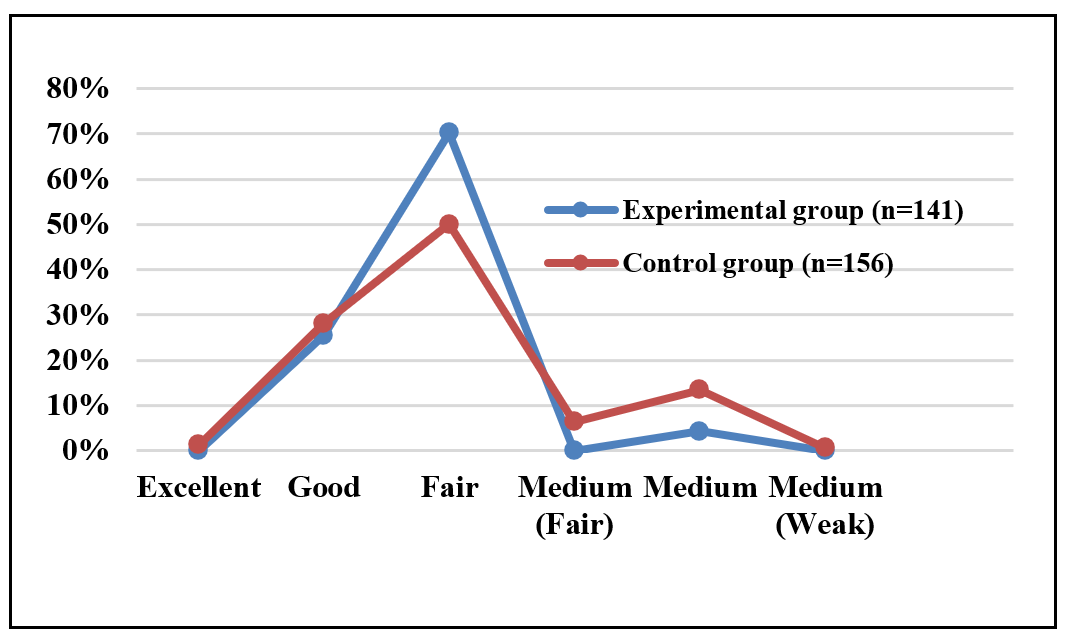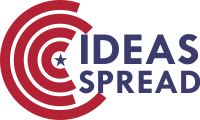Applying Semantic Theory Framework to Teaching Vocabulary of English for Medical Purposes at Vietnam Military Medical University
Abstract
This study explores the application of semantic theory in teaching vocabulary of English for medical purposes (ESP-Med) at Vietnam Military Medical University (VMMU). The objective is to enhance vocabulary acquisition through innovative teaching methodologies. A survey of 297 students and 14 instructors was conducted to assess current teaching practices and their effectiveness. Based on the collected data, the study applies three semantic approaches proposed by Daniël & Panos (2028): Referential Approach, Relational Approach, and Denotational Approach. These approaches are integrated into teaching practices to promote contextual learning, lexical associations, and semantic mapping, thereby improving vocabulary retention and comprehension. The findings reveal that the systematic application of semantic theory significantly enhances students' ability to retain and use medical vocabulary. A comparison between the experimental and control groups demonstrates that these approaches facilitate long-term memory retention and the effective use of specialized terminology. Several challenges are identified, including limited instructional time, inadequate vocabulary learning strategies, and students' reliance on rote memorization rather than active learning. Additionally, the study underscores the importance of adopting teaching methods that align with academic and professional needs. The incorporation of multimodal learning tools such as interactive exercises, real-life scenarios, and visual aids further supports vocabulary acquisition. The research also recommends integrating digital technologies, including artificial intelligence, adaptive learning systems, and virtual simulations, to optimize teaching and learning outcomes. These findings contribute to enhancing ESP-Med instruction, ultimately improving students’ academic and professional competencies in the military and medical fields.
Downloads
References
Amer. (2019). Teaching/developing vocabulary using semantic feature analysis framing the issue. In The TESOL encyclopedia of English language teaching (pp. 1–7). https://doi.org/10.1002/9781118784235.eelt0743
Ave, G. (2012). Medical terminology. http://www.DesMoines.1A50312info@dmu.edu
Božena, D. (2013). English medical terminology – Different ways of forming medical terms. JAHR, 4(7), 55–69.
Daniël, V. O., & Panos, A. (2018). Semantics. In J. Culpeper, P. Kerswill, R. Wodak, T. McEnery, & F. Katamba (Eds.), English language (2nd ed., pp. 134–145). Palgrave.
Donesch-Jezo, E. (2014). Teaching of vocabulary to medical students in ESP courses. LangLit: An International Peer-Reviewed Open Access Journal, 72–87.
Erikson, S. (2019). The effect of semantic mapping technique on technical vocabulary mastery for midwifery students. Studies in English Language and Education, 6(2), 333–342. https://doi.org/10.24815/siele.v6i2.14786
Esmail, Z., Omid, K. Z., & Hassan, B. (2017). A comparative study of teaching methods in ESP courses. European Journal of English Language Teaching, 39–49. www.oapub.org/edu
Evans, V., Dooley, J., & Tran, M. T. (2011). Career paths medical – Student’s book. Express Publishing.
Fan, M. Y. (2003). Frequency of use, perceived usefulness, and actual usefulness of second language vocabulary strategies: A study of Hong Kong learners. The Modern Language Journal, 87(2), 222–241. https://doi.org/10.1111/1540-4781.00187
Gamal, M. A. A. (2013). Strategies and approaches for teaching and learning of medical terminology. International Journal of English and Education, 2(2), 225–240.
Gu, Y., & Johnson, R. K. (1996). Vocabulary learning strategies and language learning outcomes. Language Learning, 46(4), 643–679. https://doi.org/10.1111/j.1467-1770.1996.tb01355.x
Graham, L. (1995). Functional English grammar: An introduction for second language teachers. Cambridge University Press.
Halliday, M. A. K., & Matthiessen, C. M. I. M. (2004). An introduction to functional grammar (3rd ed.). Edward Arnold. https://doi.org/10.4324/9780203783771
Hurford, J. R., & Heasley, B. (2007). Semantics: A coursebook. Cambridge University Press.
Jasmina, R., & Ivana, C. (2018). Vocabulary learning strategies used by medical students: Croatian perspective. Journal of Arts & Humanities, 7(2), 44–88. https://doi.org/10.18533/journal.v7i2.1338
Jiang, N. (2004). Semantic transfer and development in adult L2 vocabulary acquisition. The Modern Language Journal, 88(3), 416–432. https://doi.org/10.1075/lllt.10.09jia
Jonassen, D. H. (1993). Structural knowledge: Techniques for representing, conveying, and acquiring structural knowledge. Lawrence Erlbaum Associates. https://doi.org/10.4324/9780203052563
Khan, N. (2016). Difficulty in mastering and using English for specific purpose (medical). International Journal of Education, 8(1), 78–92. https://doi.org/10.5296/ije.v8i1.9163
Knight, S. (1994). Dictionary use while reading: The effects on comprehension and vocabulary acquisition for students of different verbal abilities. The Modern Language Journal, 78(3), 285–299. https://doi.org/10.1111/j.1540-4781.1994.tb02043.x
Lewis, M., & McCook, F. (1996). Cultures of teaching: Voices from Vietnam. ELT Journal, 56(2), 146–153. https://doi.org/10.1093/elt/56.2.146
Lyons, J. (1995). An introduction to semantics. Cambridge University Press.
Luppuescu, S., & Day, R. R. (1993). Reading, dictionaries, and vocabulary learning. Language Learning, 43(2), 263–287. https://doi.org/10.1111/j.1467-1770.1992.tb00717.x
Oxford, R. L. (2001). Language learning strategies. In R. Carter & D. Nunan (Eds.), The Cambridge guide to teaching English to speakers of other languages (pp. 166–172). Cambridge University Press.
Oxford, R., & Nyikos, M. (1989). Variables affecting choice of language learning strategies by university students. The Modern Language Journal, 73(3), 291–300. https://doi.org/10.1111/j.1540-4781.1989.tb06367.x
Saragih, E. (2019). The effect of semantic mapping technique on technical vocabulary mastery for midwifery students. Studies in English Language and Education, 6(2), 333–342. https://doi.org/10.24815/siele.v6i2.14786
Schmitt, N. (1997). Vocabulary learning strategies. In N. Schmitt & P. McCarthy (Eds.), Vocabulary: Description, acquisition and pedagogy (pp. 236–239). Cambridge University Press.
Trier, J. (1931). Theory of semantic fields. Clarendon Press.
Wang, Z. (2023). The application of semantic field theory in vocabulary learning. Frontiers in Humanities and Social Sciences, 3(3), 29–40. https://doi.org/10.54691/fhss.v3i3.4461
Wilkins, D. A. (1972). Linguistics in language teaching. Edward Arnold. https://doi.org/10.1017/S0025100300000682
Yang, Z. (2005). Terminology-centred English for medical purpose teaching. Sino-US English Teaching, 2, 20–22.
Yesim, D., & Nurcihan, Y. (2013). Using semantic mapping technique in vocabulary teaching at pre-intermediate level. Procedia - Social and Behavioral Sciences, 70, 1531–1544. https://doi.org/10.1016/j.sbspro.2013.01.221
Yulianti, K. (2007). The new curriculum implementation in Indonesia: A study in two primary schools. International Journal about Parents in Education, 9(1), 157–168. https://doi.org/10.54195/ijpe.18243
Zahra, H., & Maryam, H. (2014). Investigation of vocabulary learning strategies among EFL Iranian medical sciences students. Procedia - Social and Behavioral Sciences, 192, 629–637. https://doi.org/10.1016/j.sbspro.2015.06.110
Lê, H. B. C., & Lâm, T. T. T. (2020). Reality and needs for learning and using medical English of 3rd and 6th year medical students at Can Tho University of Medicine and Pharmacy. Can Tho Journal of Medicine and Pharmacy, 27, 85–92.
Nguyễn, H. H., Phan, H. T., & Nguyễn, V. C. (2015). Surveying the learning needs of students at Nurse Anesthetist Department. Ho Chi Minh Medicine and Pharmacy University, 19(5), 266–229.
Nguyễn, T. N. (2012). Luận bàn về việc ứng dụng phương thức sử dụng hình thái học, âm vị học và ngữ âm học trong việc giảng dạy thuật ngữ tiếng Anh chuyên ngành y. Tạp chí Y học thực hành, 6(825), 96–98.
Nguyễn, T. N. (2014a). Vai trò của phân tích diễn ngôn trong giảng dạy thuật ngữ và kỹ năng đọc ngôn ngữ của ngành y. Tạp chí Giáo dục, 6, 151–153.
Nguyễn, T. N. (2014b). Tìm hiểu về phân tích hội thoại một cách tiếp cận trong phân tích diễn ngôn. Tạp chí Giáo dục, 6, 151–153.


This work is licensed under a Creative Commons Attribution 4.0 International License.
Copyright for this article is retained by the author(s), with first publication rights granted to the journal.
This is an open-access article distributed under the terms and conditions of the Creative Commons Attribution license (http://creativecommons.org/licenses/by/4.0/).























